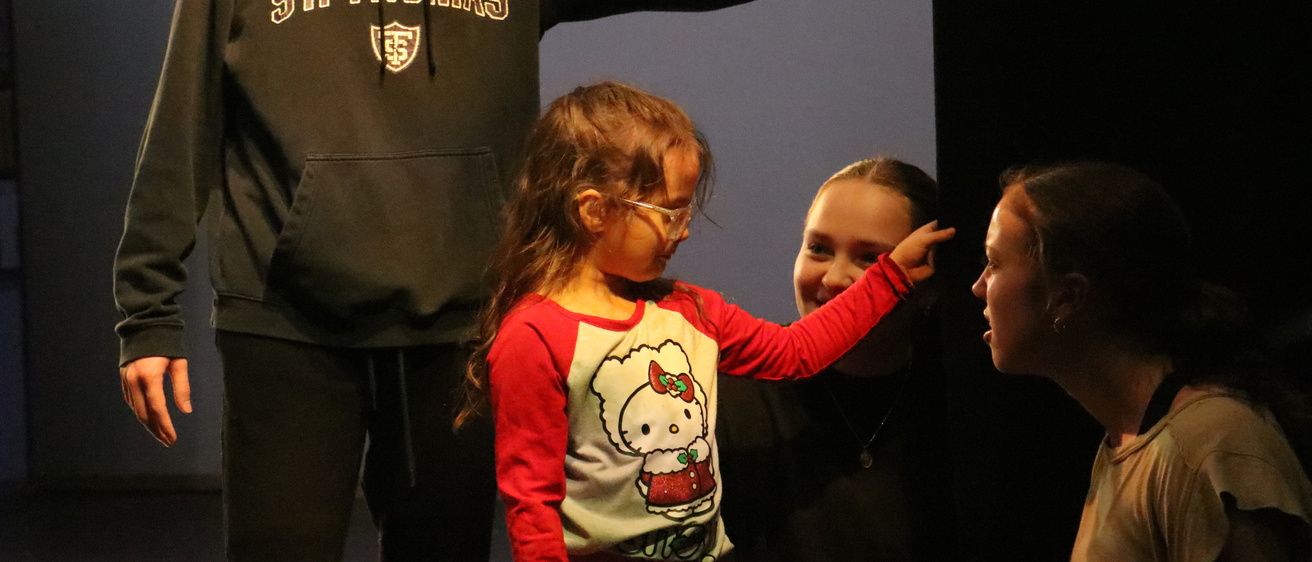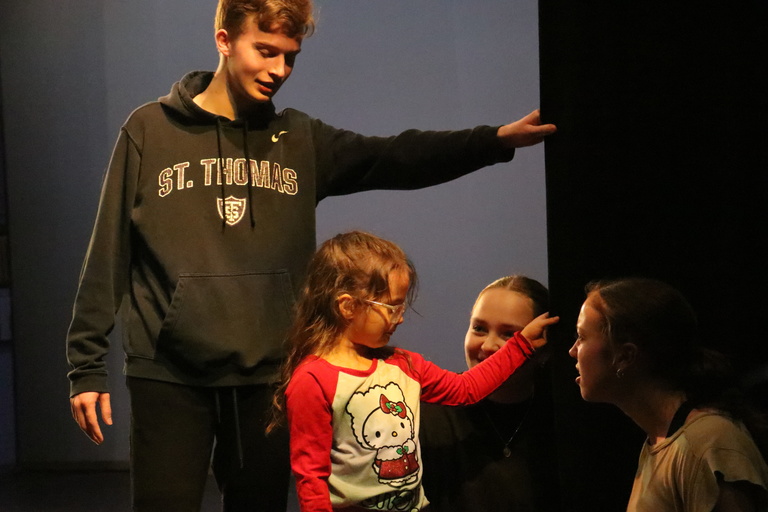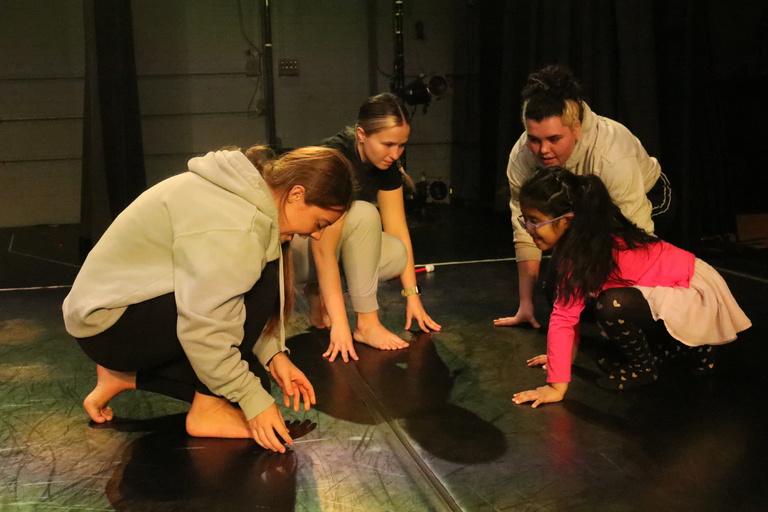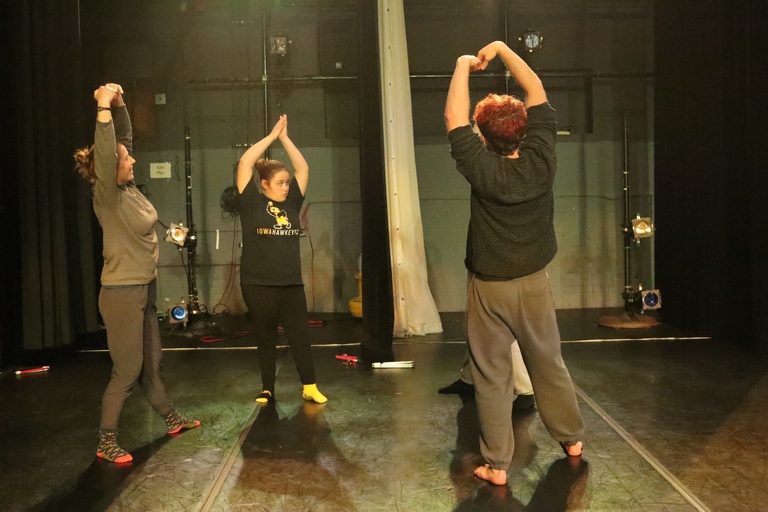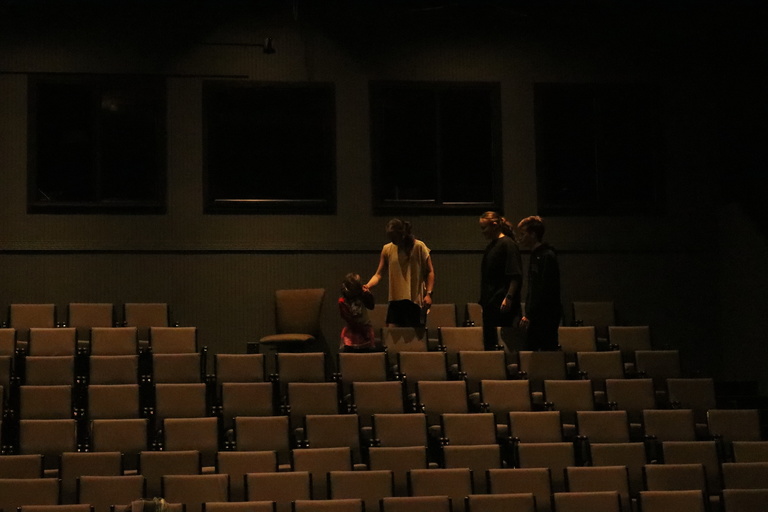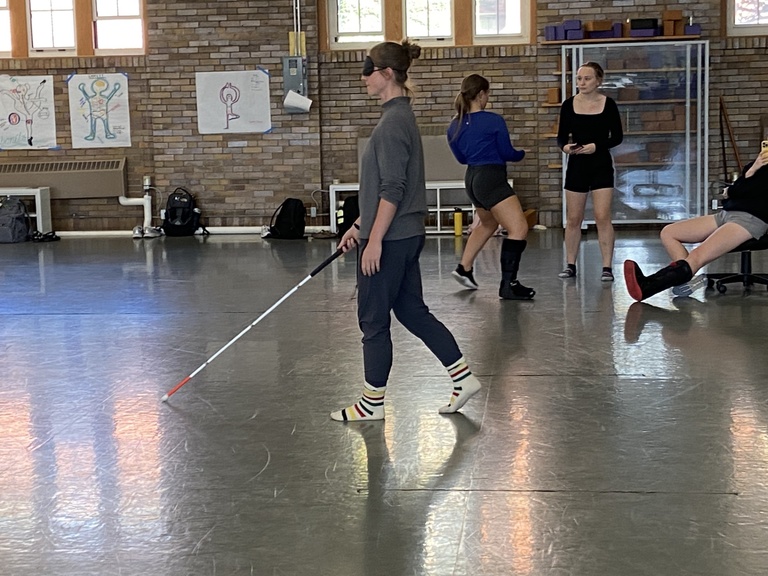Since 1984, The UI Dance Company (UIDC) has been using dance to provoke awe, inspire joy, and create new perspectives by presenting high-caliber, innovative dances across the state of Iowa. For their 2023-2024 season, UIDC is preparing an interactive program of dance and dialogue called Dances Described that will put special emphasis on the use of Audio Description as a tool for making dance more accessible to audiences with blindness low-vision, and other visual impairment.
Cami Rezabek, a fourth-year BFA student in dance, has joined the UIDC as an undergraduate research assistant. While the company has been developing their new piece, “Winning” led by UIDC Artistic Director and Assistant Professor of Dance Stephanie Miracle, Rezabek has been working on creating Audio Description that will be read live during the dance.
Audio Description originated in the late 1970s as a formal process of translation and accessibility, first used in theatre, television, and film to narrate actions not evident through dialogue or other sound. Traditionally, those producing Audio Description are encouraged to simply say what they see but, because dance is a largely nonverbal form of expression, it poses a new set of challenges.
How do you capture the artistry and emotional resonances of a form that communicates so much without words? How do you translate that into description?
For the UIDC it was important to be mindful of such questions from the start, generating Audio Description as they develop choreography. “Doing the Audio Description for ‘Winning’ as we’re creating the piece has been a huge benefit,” says Rezabek. “Hearing how the dancers describe their own movements has really expanded the way I write about dance and better communicate the visual into language.”
Creating More Accessible Dance Practices
Miracle began developing an interest in Audio Description when she was living in Washington, D.C., and became aware of the work of Joel Snyder—a huge proponent of Audio Description’s use in mainstream culture.
“I got to know Joel through his wife Esther Geiger, a movement analyst and dancer who was in many of my choreographies at that time. In my work we were experimenting with choreographic scores that had one dancer moving, a second dancer describing the movement and a third dancer with eyes closed interpreting the descriptions into movement.”
“Later,” Miracle explains, “during the pandemic when live performance was not possible, I started working on dances that were just for the ears.”
Miracle has brought her practice and research to Iowa, inviting guest artists such as Black disabled dancer/choreographer Kayla Hamilton, Artistic Director of K Hamilton Projects and co-creator of Crip Movement Lab a cross-disability curriculum for teaching movement practices that are open to everybody.
Rezabek eagerly participated in Hamilton’s classes. “I’ve always been interested in accessibility and inclusion in dance,” she says. “I went up to her after class and said I would be interested in writing audio description in the future. Some of my professors heard me and that’s how I came to this research assistant job with UIDC.”
Over the summer, Miracle, Rezabek, and other UIDC members engaged in a series of workshops led by Krishna Washburn, a disabled dance artist and the founder of Dark Room Ballet, a pre-professional dance curriculum designed for the educational needs of blind and visually-impaired people.
Washburn’s workshops on describing dance were invaluable to the UIDC, and equally important was the opportunity to work directly with blind and visually-impaired individuals. Informed and inspired by that experience, UIDC members began planning an interactive workshop for students from the Iowa Educational Services for the Blind and Visually Impaired (IESBVI) Extending Learning Program.
The Workshop
“It really started over summer,” Miracle says, “I started reaching out to Facebook groups that work with blind and visually-impaired communities. That’s how we got connected with the Extended Learning Program.”
Miracle and the UIDC began preparing to host a workshop for blind and visually-impaired IESBVI students in the community. Before conducting the workshop, IESBVI educator Crystal Beighley visited the Halsey Hall gym to lead a special training to prepare UIDC members for working with people who are blind and visually-impaired.
On November 9th, four visually-impaired students—two second-graders and two teenagers—arrived at Space Place Theatre with their teachers for a special movement workshop and work-in-progress performance of “Winning” with live open Audio Description.
The workshop started with an invitation to explore Space Place. “They were walking around, touching the lights, wandering up through the audience,” Miracle explains. “Some of the students had never been in a theatre before so it was important for them to move and discover on their own, mostly through tactile processing.”
Then, students were asked a series of questions to help produce and engage movement: What around you is alive? What around you is winning? What are you cheering for? Based on their responses, UIDC members guided students through movement exercises.
When UIDC performed their work-in-progress for the students, Rezabek sat among them to read her Audio Description. “This was my first time doing the live description for an audience,” she recounts. “It was really direct feedback. I could hear which parts of the dance they were reacting to, like when they would giggle. It helped me understand what was working, what was making the audience feel something.”
The feedback they received from the young audience was invaluable and the UIDC is excited to invite them back for their concert in February.
“I think everyone can benefit from Audio Description,” Miracle says. “Building connections with communities that might not be able to access dance otherwise and offering this entry point has been so exciting.”
The UIDC Home Concert Dances Described will take place at 7:30 pm on February 22, 23, and 24, in Space Place Theatre, which is located in North Hall on the main University of Iowa campus. The concert promises innovative dances developed to create greater inclusion and accessibility on the stage. The performance will feature live Open Audio Description written and performed by Rezabek for for their new piece, “Winning."
Closed Audio Description delivered through headsets will also be available to audience members for the other three pieces upon request and Friday's performance will include ASL interpretation.
